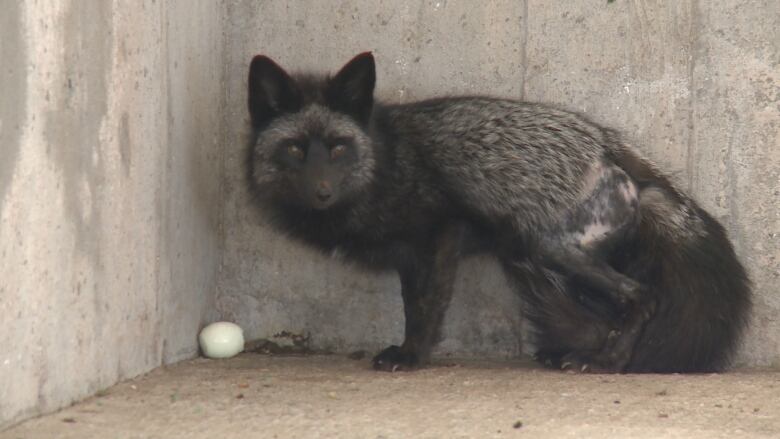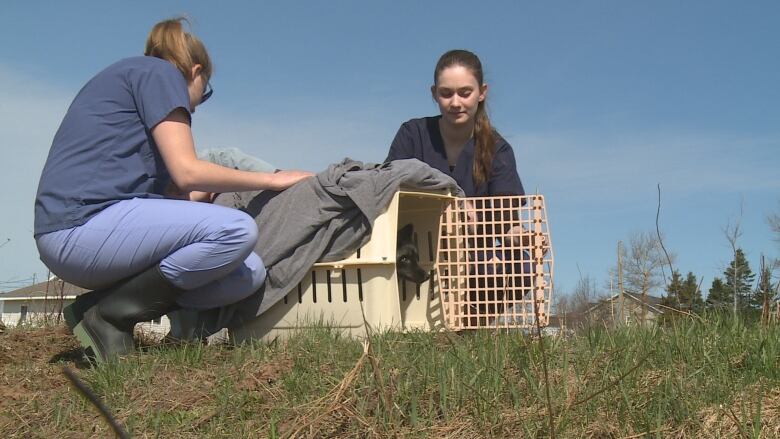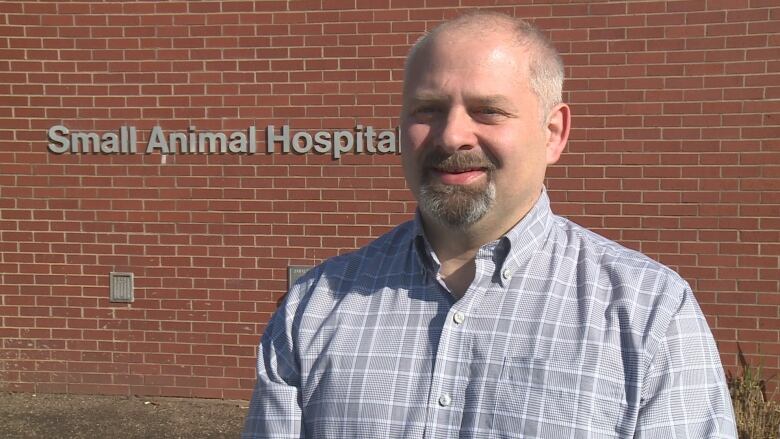'A life is a life': Rehabilitated fox released back into wild with help from AVC
Staff and students cared for the injured fox for 6 weeks

A young fox is out on her own in the wild once again, after weeks of rehabilitation at the Atlantic Veterinary College (AVC).
Staff and students released the silver fox on the outskirts of Charlottetown on Friday morning.
Neurologic deficits, dislocated hip
A Good Samaritan brought the fox to the AVC about six weeks ago, after finding her on the side of the road.
"When she arrived here, it was obvious that she had had some severe trauma of some sort. We presume probably hit by a car," said Jonathan Spears, director of Wildlife Service at the AVC.

Staff and students stabilized the fox and dealt with the head trauma, said Spears. They later discovered she also had a dislocated hip. Even after being reset, the hip continued to dislocate, and ultimately required surgery.
Spears said the surgery is the same as one often performed on cats and dogs.
'A life is a life'
Spears said the surgeon and staff donated time to treat the fox. Even so, the cost to care for the animal still came in at more than $1,000.
P.E.I. may be overrun with foxes, but Spears said the "significant" cost of treatment was worth it, even for such a common animal.

"Our approach really is that a life is a life," said Spears. "We have to take the species perspective out of it, and really try and concentrate on our medicine and what's best for the animal, and the welfare of the animal."
He also noted that the chance to work with the fox offered an "immeasurable" learning opportunity to students.
Limited interaction
While treating the fox, staff and students did what they could to make sure she wouldn't become too used to people.
Veterinary student Maia Courtenay said when working with the fox, she kept her distance as much as possible, including avoiding eye contact.
"We get as close as we need to to clean feces, and just basically make sure she has an acceptable living environment, but definitely no physical contact, and just ignore her as much as possible," said Coutenay.

Spears said he's confident the fox will do well on her own in the wild.
"You won't see her walking a hundred per cent normally because, as a result of the surgery. But she will be pain free, and will live a pretty normal life, we expect," said Spears.
- MORE P.E.I. NEWS | Photo capturing iconic Canadian image featured on commemorative bill
- MORE P.E.I. NEWS | P.E.I. woman sentenced in dog starvation case, banned from owning pets












_(720p).jpg)


 OFFICIAL HD MUSIC VIDEO.jpg)
.jpg)



























































































